The mortar is finished, and what a beauty she is too, though I say so myself.
The adjustable windage is quite smooth, the folding handle giving adequate purchase and leverage.
While the leg spreading system has its advantages, I can’t help but feel there are simpler designs that would have had the same result. Perhaps the reasoning is plainer with a live firing version.
The baseplate has a 3D printed socket for the ball to slot into. On the original this is stamped into the plate design and features a lock, but here the ball is left free so that the barrel can be quickly upended and spent shells ejected.
The spikes on the bipod should keep it raised just high enough to give access to the elevation control in the centre.
A top-down view, showing the windage lever in the stowed position.
Once packed away, this mortar isn’t actually too bad for portability. Considering the complexity and the precision you could achieve out to a respectable range on the original, you can see why modern light mortars are more closely related to this package than the T89 or SMBL 2″ families. While they may have portability and speed on their side, the ability to fine-tune fire for only a little extra weight and bulk certainly has its appeal.
If you liked this project or have an idea of your own, drop us a line on enquiries.vintageairsoft@gmail.com to discuss. ‘Like’ our Facebook page or follow the blog to get regular updates on projects and interesting videos and articles.
You can find the build posts for this mortar here.
Don’t forget you can buy some of our complete products via Etsy. If you would like to commission a build like this, please drop us a line on the above email.

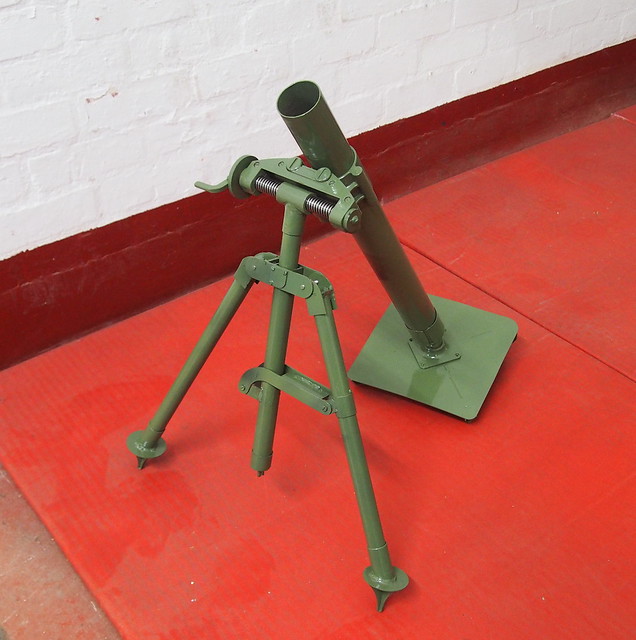
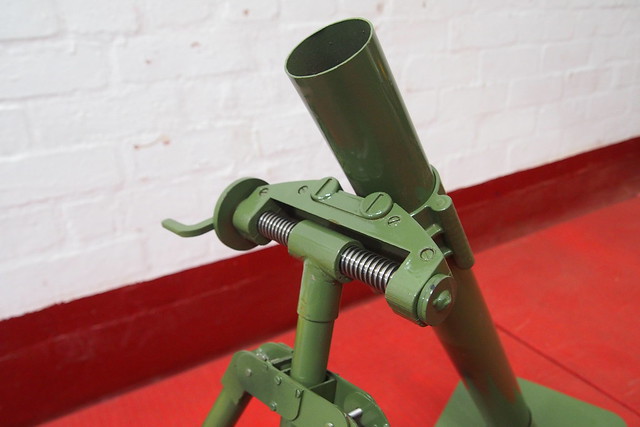
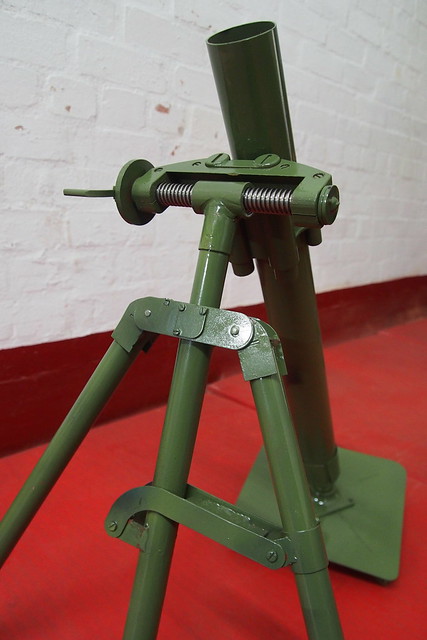

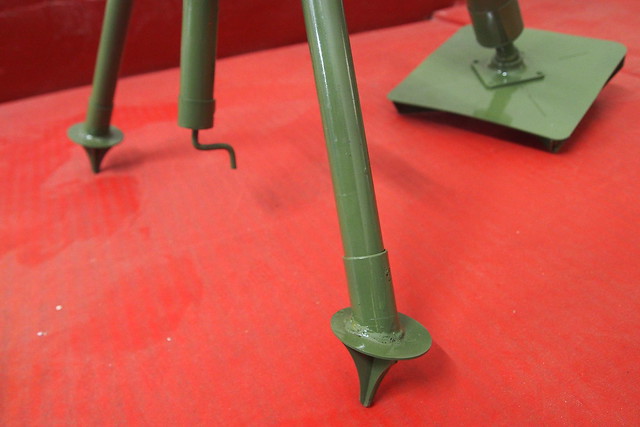
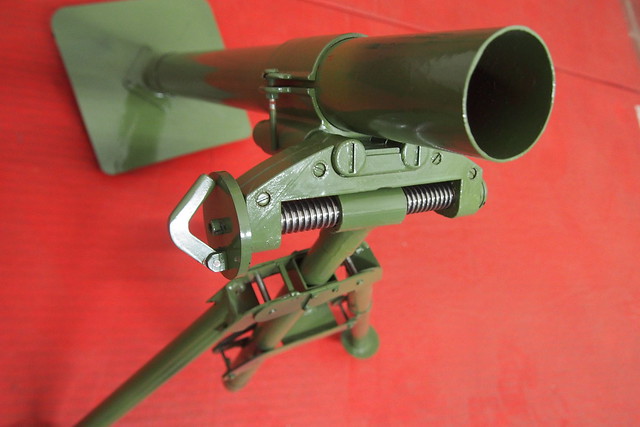
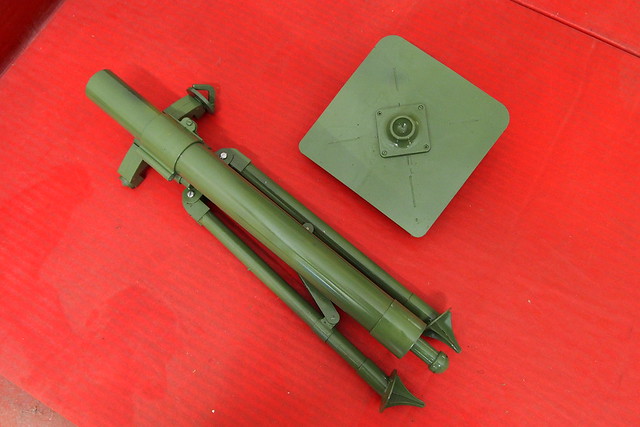
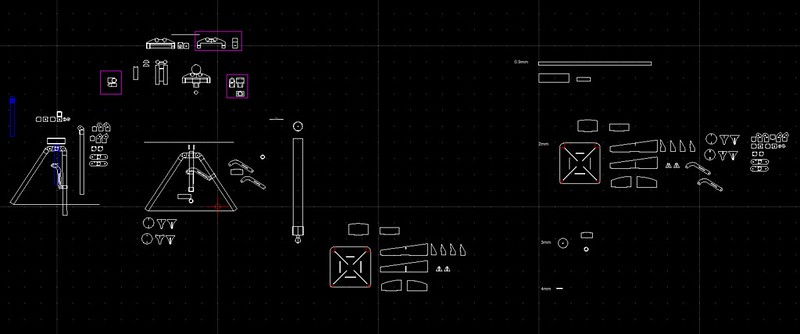
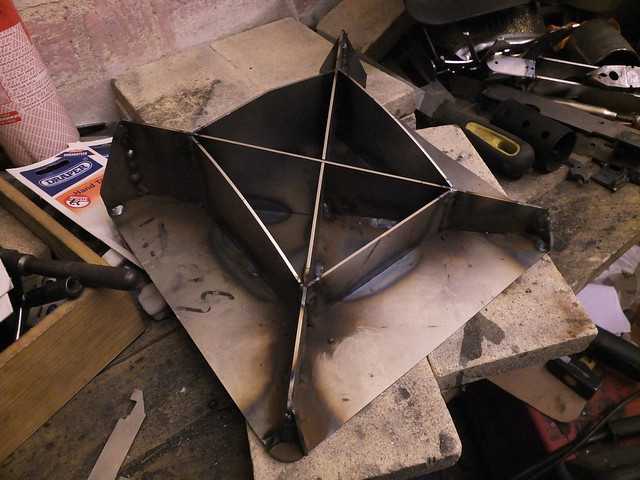
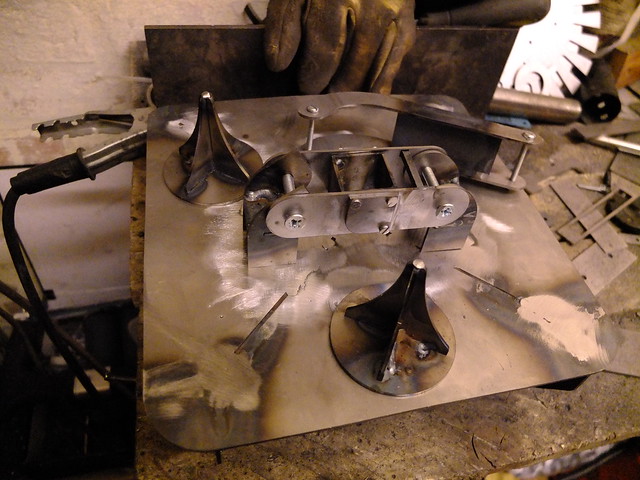
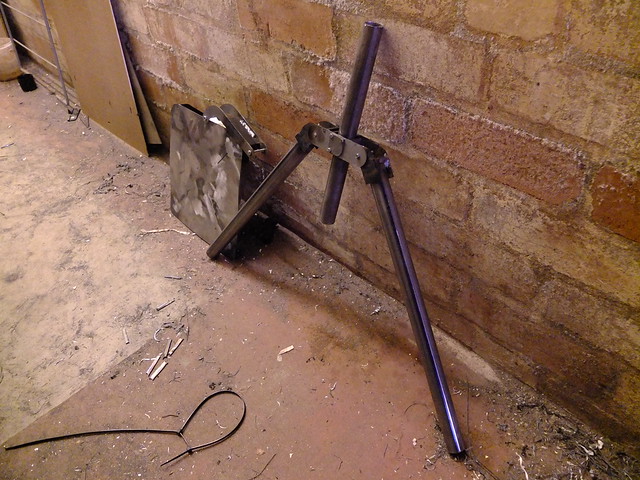
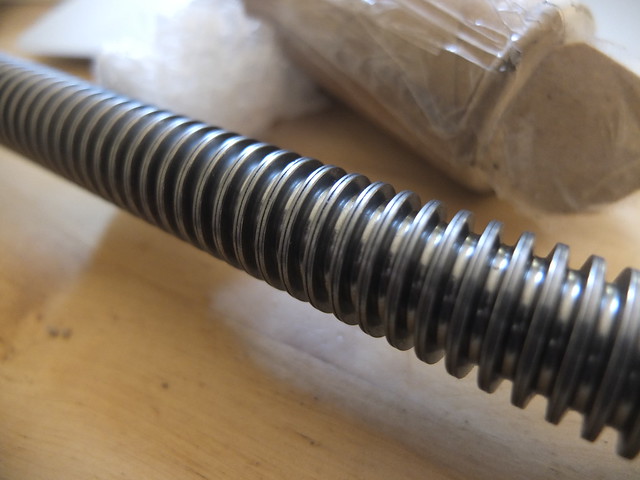

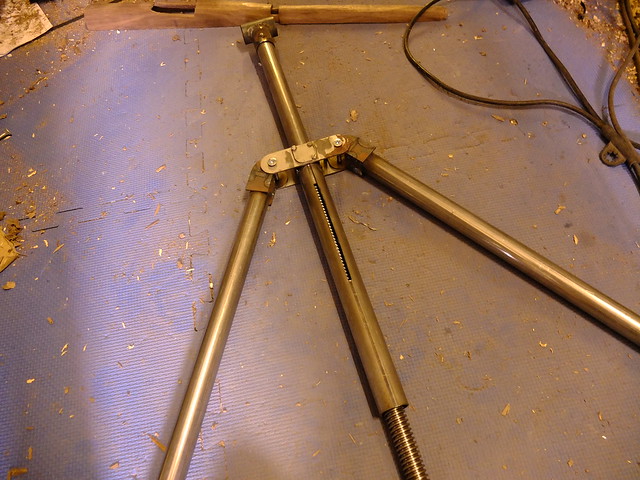


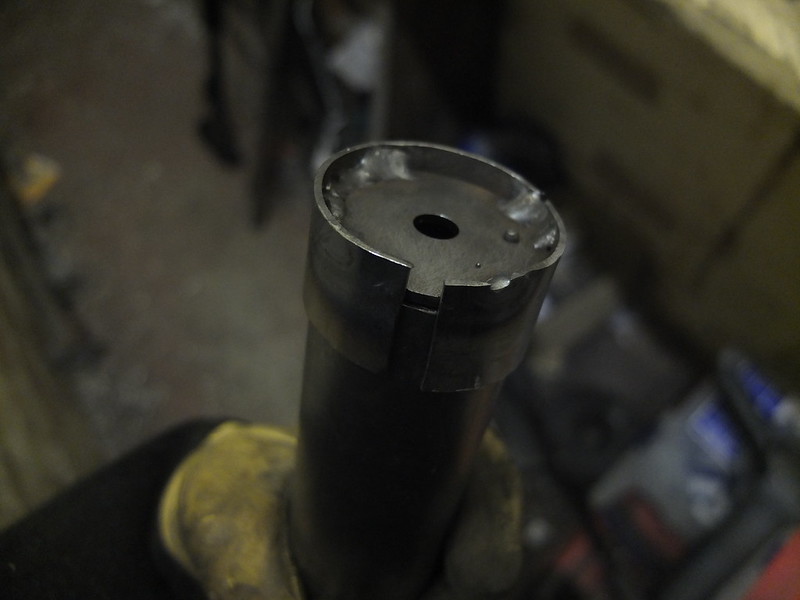
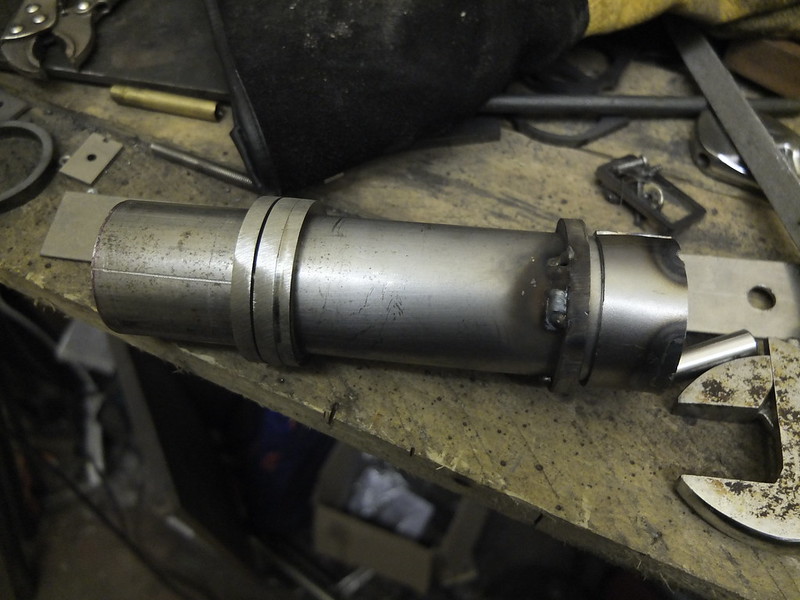
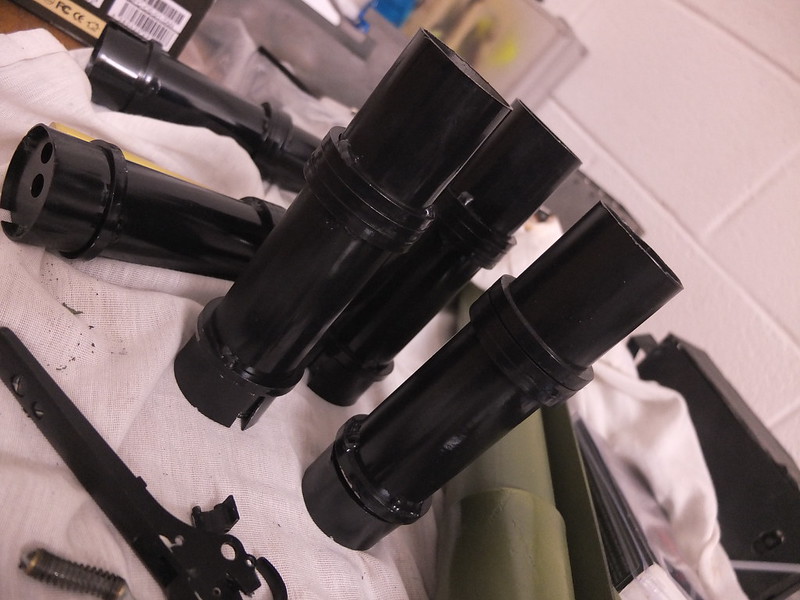


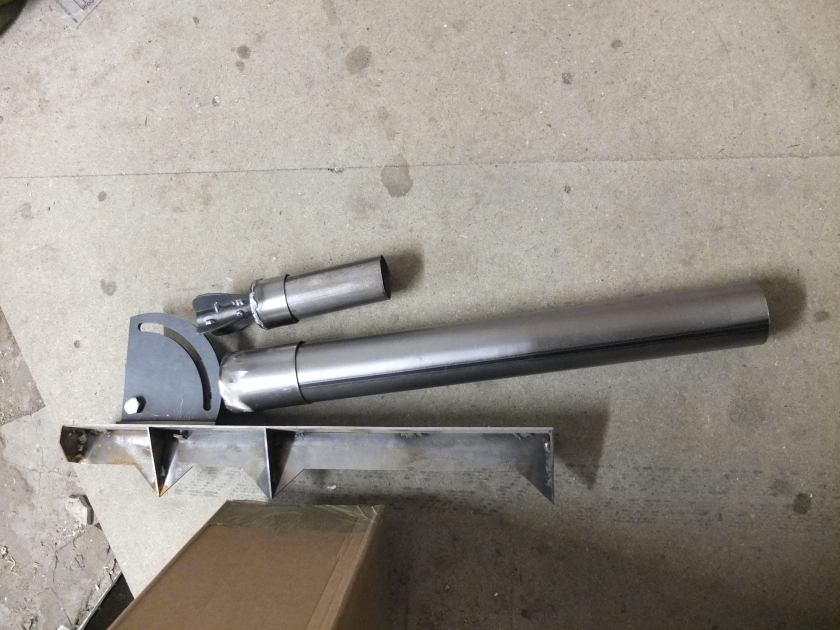 Something worth pointing out is that this is designed mainly for use with TAG shells to take out targets at long range or lay smoke screens, though you can put in any 40mm shells you like. During testing we did experiment with scatter shells and they were effective at clearing a wide area ahead of the mortar.
Something worth pointing out is that this is designed mainly for use with TAG shells to take out targets at long range or lay smoke screens, though you can put in any 40mm shells you like. During testing we did experiment with scatter shells and they were effective at clearing a wide area ahead of the mortar.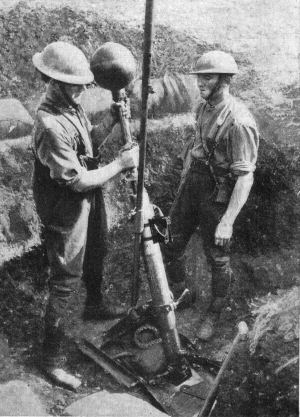


 The trigger mechanism is now also smaller and smoother to operate, so it now looks like this:
The trigger mechanism is now also smaller and smoother to operate, so it now looks like this:

